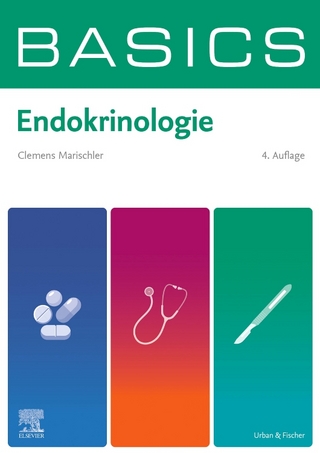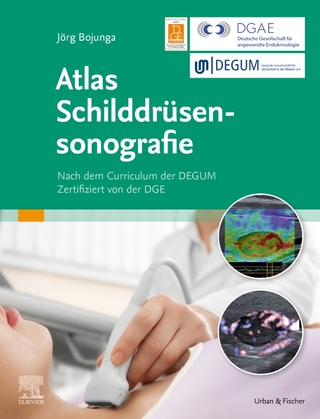
The Cytochemical Bioassay of Polypeptide Hormones
Springer-Verlag Berlin and Heidelberg GmbH & Co. K
978-3-540-10040-9 (ISBN)
- Titel ist leider vergriffen;
keine Neuauflage - Artikel merken
This was done with skill and enthusiastic dedication by my colleagues, Dr. Lucille Bitensky, Dr. F. P. Altman, Dr. R. G. L. W. Poulter and Mr. A. A. Silcox, first at the Royal College of Butcher, Dr.
1. Nature of Cytochemistry.- A. Definitions and Origins.- I. Confusion Between Cytochemistry and Histochemistry.- II. Definition of Histochemistry.- III. Aims of Cytochemistry.- IV. Origin of Cytochemistry.- B. Relationship Between Cytochemistry and Biochemistry.- I. Material.- II. Reaction.- III. Precipitation.- 1. The Need for Precipitation.- 2. Methods for Obtaining an Insoluble Reaction Product.- a) Binding to an Insoluble Tissue Component.- b) Simultaneous Capture Methods.- c) Post-coupling Techniques.- d) Tetrazolium Salts.- IV. Measurement.- 2. Basic Concepts of Hormone Assays.- A. Two Ways of Assaying a Biologically Active Molecule.- I. General Considerations.- II. Assay of Enzymes.- B. Radio-immunoassay.- I. General.- II. Sensitivity of Radio-immunoassay.- C. Drawback of the Analytical Approach.- I. Problem of Fragments.- II. Problem of Different Forms of the Hormone.- III. Special Advantage of the Analytical Method.- D. The Need for Microbioassays.- 3. Introduction to Cytochemical Bioassay.- A. Criteria for Bioassays.- I. Basic Requirements.- 1. Nature of Bioassays.- 2. Parallelism.- 3. Precision of Bioassays.- 4. Accuracy.- 5. Specificity.- 6. Sensitivity.- 7. Variability.- II. Problems of Bioassays.- 1. Different Potencies Depending on Route of Administration.- 2. Problem of Desialation.- 3. Secondary Effects of Hormones.- B. Cytochemical Bioassays.- I. Basic Approach.- 1. Biochemical Effect of a Hormone.- 2. Hormonal Status of Tissues.- 3. Physiological State of the Target Cells.- 4. The Need for Essential Metabolites.- 5. Summary of the Basic Features of Cytochemical Bioassays.- II. Cytochemical Section Assays.- 1. Basic Procedures.- 2. Critical Importance of Colloid Stabilizers.- C. Special Features of Cytochemical Bioassays.- I. Details of the Assays.- 1. Dose-Response Calibration Graphs.- 2. Parallelism.- II. Deviations from Parallelism.- III. Use of Plasma.- 1. Loss of Biological Activity.- 2. Active Substances in Blood Cells.- 3. Configuration of Polypeptide Hormones.- IV. Physiological Studies.- 4. Maintenance Culture.- A. Importance of Organ Culture.- I. Changes Induced by Proliferative Culture.- II. Disadvantages of Isolated Cells.- B. Earlier Use of Organ Culture.- C. Maintenance Culture as Used in Cytochemical Bioassays.- I. Aims.- 1. Removal from the Influence of the Animal.- 2. Recovery from the Trauma of Excision.- 3. Restoration of Metabolites.- II. Procedure.- 1. Selection of the Animal Species.- 2. Segments.- 3. Culture Medium.- 4. Maintenance Culture.- III. Technical Considerations.- 5. Cytochemical Methods.- A. Basic Procedures.- I. Preparation of Tissue Slices.- 1. Histological Techniques.- 2. Chilling.- 3. Chilling Procedure Used in Cytochemical Bioassays.- 4. Mounting the Specimen.- 5. Sectioning.- 6. Flash Drying.- 7. Protection of Undenatured Sections.- B. Demonstration of Dehydrogenase Activity.- I. Nature of Reduced Tetrazolium Salt.- II. Terminology.- III. Use of an Intermediate Hydrogen Acceptor.- IV. Validation.- V. Function of Reducing Equivalents.- VI. 'NADPH-diaphorase' System.- C. Cytochemical Investigation of Lysosomal Function.- I. General.- II. Cytochemical Investigation of Lysosomal Function.- 6. Microdensitometry.- A. Development of Microspectrophotometry.- I. Background.- 1. Artefact of the 'Average' Nucleus.- 2. Ultraviolet Microspectrophotometry and Potential Errors.- 3. Non-specific Absorption.- 4. Diffraction.- B. Microdensitometry.- I. Basis of Measurement.- 1. Application of the Beer-Lambert Law.- 2. Optical Inhomogeneity.- II. Use of a Scanning and Integrating Microdensitometer.- 1. Procedure.- 2. Mean Integrated Extinction.- III. Validation of Microdensitometry.- 7. The Segment Assay of the Adrenocorticotrophic Hormone.- A. Rationale.- I. Background.- 1. The Hormone.- 2. Biological Action of ACTH on the Adrenal Gland.- II. Ascorbate Depletion and Hydroxylation.- III. Hypotheses Concerning the Mode of Action of ACTH.- B. Cytochemical Segment Assay of ACTH.- I. Introduction.- II. Procedure.- 1. Target Tissue.- 2. Apparatus.- 3. Culture Medium and Procedure.- 4. Function of the Maintenance Culture.- 5. Exposure to the Hormone.- 6. Cytochemical Reaction.- 7. Measurement.- III. Results and Validation.- 1. The 4 + 2 Assay: Precision.- 2. Sensitivity.- 3. Reproducibility.- 4. Accuracy and Specificity.- IV. Comparison with Other Assays.- V. Comparison with Radio-immunoassay.- 8. The Section Assay of Adrenocorticotrophin.- A. Background.- I. The Need for a More Routine Assay.- II. The Problems.- B. Cytochemical Section Assay of ACTH.- C. Validation.- 9. Application of Cytochemical Bioassays of Adrenocorticotrophin.- A. Physiological Studies.- I. Half-Time of Bioreactive ACTH.- II. Circadian Rhythm and Episodic Secretion of ACTH.- B. Advantages of a Very Sensitive Assay.- I. ACTH Levels in Neonates.- II. Hypopituitarism.- III. Studies on Small Animals.- C. Insulin-Hypoglycaemia Test of Hypothalamic-Pituitary-Adrenal Function.- I. Insulin-Hypoglycaemia Test.- II. Activity-Time Response in the Hypoglycaemia Test.- 10. The Assay of Thyroid Stimulators.- A. Background.- I. Thyroid-Stimulating Hormone.- 1. Nature of Thyrotrophin.- 2. Effect of TSH Acting on the Thyroid.- 3. Radio-immunoassay.- 4. Discrepancies Between Radio-immunoassay and Physiology.- II. Thyroid-Stimulating Immunoglobulins.- B. Cytochemical Segment Assay of Thyroid Stimulators.- I. Rationale.- II. Procedure.- III. Validation.- 1. Time Course of Response.- 2. Nature of the Response.- 3. Specificity and Accuracy.- 4. Sensitivity and Reproducibility.- 5. Inadvisability of Using Serum.- 6. Correlation with Radio-immunoassay.- 7. Circulating Levels of TSH and Discrepancies with Radio-immunoassay.- IV. Studies with Thyroid-Stimulating Immunoglobulins.- C. Cytochemical Section Assay of Thyroid Stimulators.- I. Background.- II. Procedure.- III. Validation.- D. A Possible Mechanism for the Action of Thyroid Stimulators.- E. Influence of Thyrotrophin on Oxidative Metabolism.- I. Significance of the Pentose Shunt.- II. NAD+-kinase.- III. Influence of Thyrotrophin.- 1. NADPH diaphorase.- 2. NAD+-kinase.- 11. Luteinizing Hormone.- A. Background Information.- I. Nature of the Hormone.- II. Methods of Assaying Luteinizing Hormone.- B. Cytochemical Bioassay of Luteinizing Hormone.- I. Original Procedure.- 1. Background.- 2. Original Cytochemical Segment Bioassay.- 3. Discrepancy Between Results with this Bioassay and with Radio-immunoassay.- II. Cytochemical Section Assay.- 1. Background.- 2. Procedure.- 3. Validation.- 12. Gastrin-like Activity.- A. Background.- I. Nature of Gastrin.- II. Biological Effects of Gastrin.- B. Cytochemical Segment Assay.- I. Carbonic Anhydrase.- 1. Background.- 2. Cytochemical Reaction.- 3. Rationale.- 4. Measurement.- II. Segment Assay.- 1. Background: pH of the Medium.- 2. Procedure.- 3. Precision.- C. Cytochemical Section Assay.- I. Problems.- II. Assay.- 1. Procedure.- 2. Precision.- D.Validation.- I. Effect of Cholecystokinin.- II. Effect of the Octapeptide of CCK.- III. Effect of Secretin.- IV. Effects of Other Mediators of Secretion.- V. Effect of Big Gastrin.- VI. Trasylol: Measurement of Little and Big Gastrin Activity.- VII. Comparison of the Cytochemical Bioassay and Radio-immunoassay.- E. Physiological Studies.- I. Effects of a Test Meal.- II. Studies on Pernicious Anaemia.- 13. Parathyroid Hormone.- A. Background Information.- I. The Hormone.- II. Bioassays.- III. In Vitro Assays.- B. Cytochemical Bioassay of Parathyroid Hormone.- I. Background.- 1. Possible Physiological Functions of the Hormone.- II. Cytochemical Studies on the Responses of the Renal Cortex to PTH.- 1. General Investigations.- 2. Method of Relating Activity to Histology.- 3. Effect of PTH on Different Regions of the Nephron.- III. Cytocherrfical Bioassay.- 1. Studies Required to Produce an Assay.- 2. Assay Procedure.- IV. Validation.- 14. Hypophysiotrophic Hormones: Two-Step Bioassays.- A. Background.- I. Hypothalamus as an Endocrine Organ.- II. Hypothalamic Hormones.- III. Problems in the Direct Bioassay of Hypophysiotrophic Hormones.- B. Thyrotrophin-Releasing Hormone.- I. Structure.- II. Distribution of Thyrotrophs in the Pituitary Gland.- III. Cytochemical Bioassay.- C. Corticotrophin-Releasing Factor.- I. Cytochemical Bioassay.- II. Results with the Bioassay.- 15. Prospects: Uses of the Cytochemical Bioassay System.- A. Bioassay of Hormones.- I. New Assays.- II. Assay of Similar Factors.- III. Influence of the 'Biologically Inactive' Part of the Molecule.- IV. Blocking or Stimulating 'Antibodies': The Importance of Parallelism.- B. Cytochemistry as Cellular Chemical Pathology.- C. Study of Biologically Active Molecules.- D. Conclusion.- Appendix 1. Maintenance Culture.- Appendix 2. Microdensitometry with the Viekers M85 Microdensitometer.- Appendix 3. Main Cytochemical Reactions Used in These Assays.- Appendix 4. Dilution of the Standard Reference Preparations.- References.
| Reihe/Serie | Monographs on Endocrinology ; 17 |
|---|---|
| Zusatzinfo | 10 black & white illustrations, 7 black & white tables, biography |
| Verlagsort | Berlin |
| Sprache | englisch |
| Gewicht | 580 g |
| Themenwelt | Medizinische Fachgebiete ► Innere Medizin ► Endokrinologie |
| Studium ► 1. Studienabschnitt (Vorklinik) ► Biochemie / Molekularbiologie | |
| Naturwissenschaften ► Biologie ► Biochemie | |
| ISBN-10 | 3-540-10040-7 / 3540100407 |
| ISBN-13 | 978-3-540-10040-9 / 9783540100409 |
| Zustand | Neuware |
| Haben Sie eine Frage zum Produkt? |
aus dem Bereich


